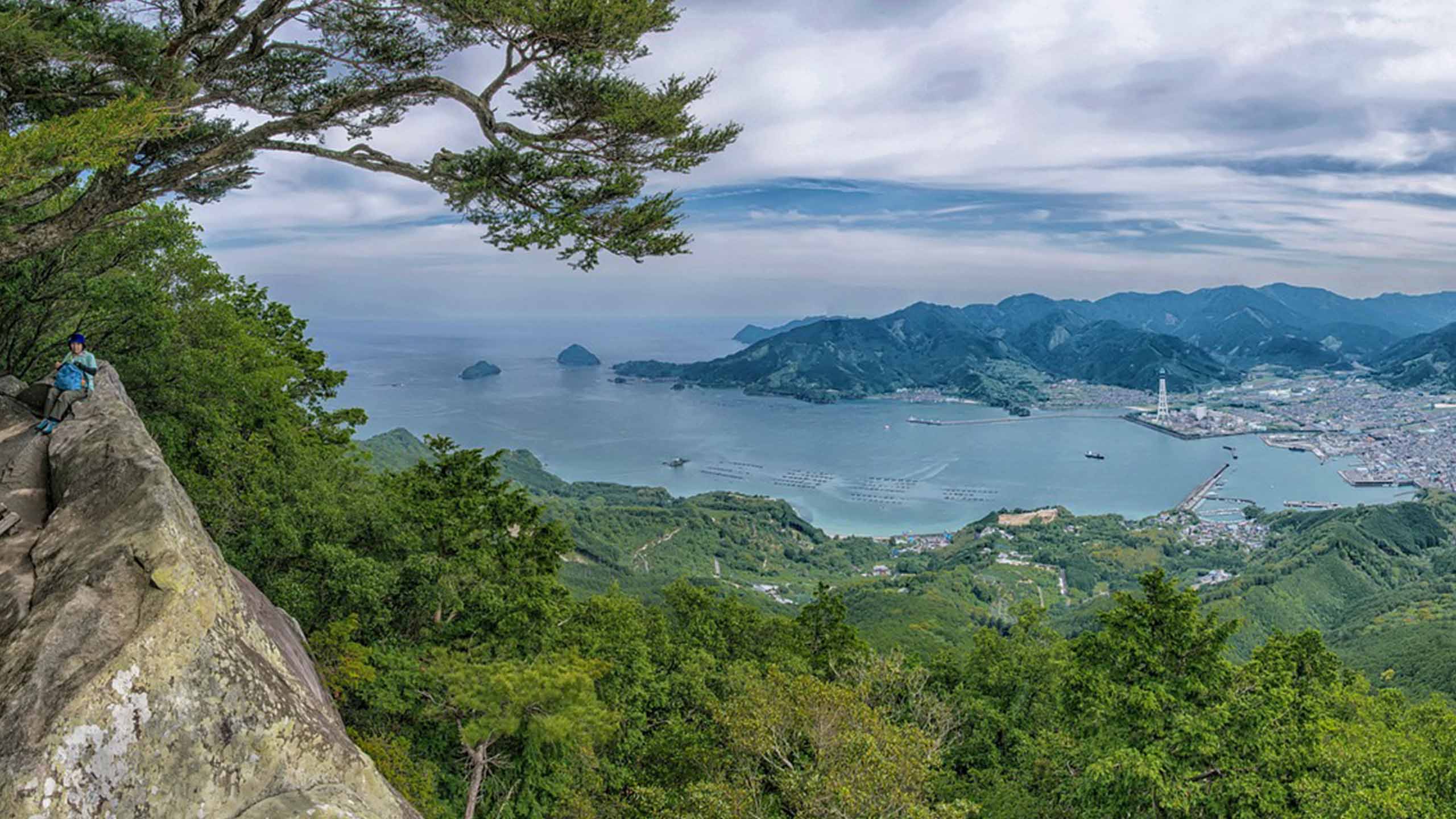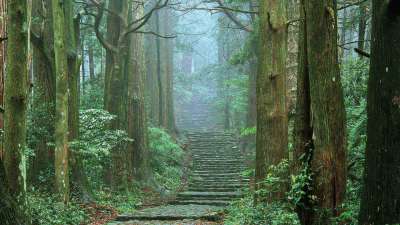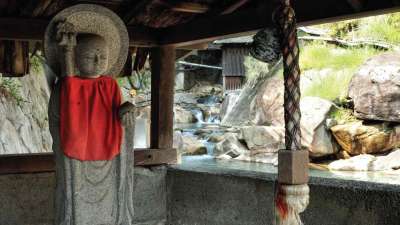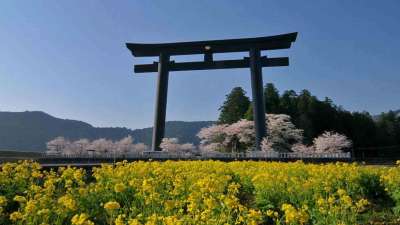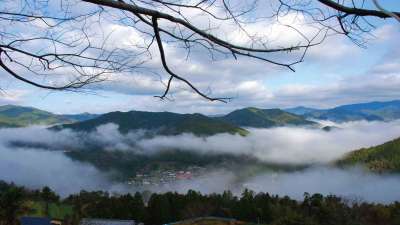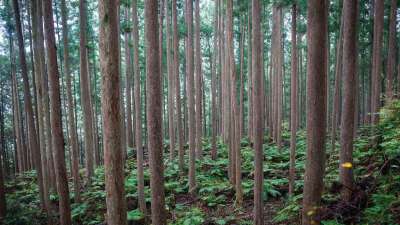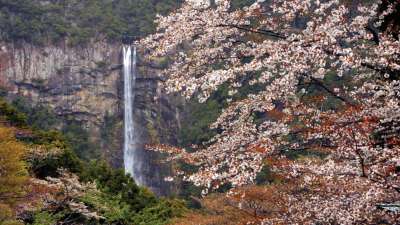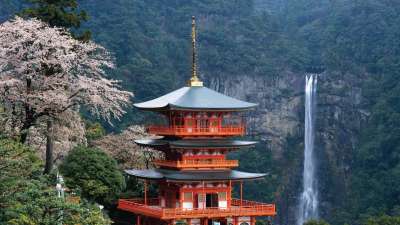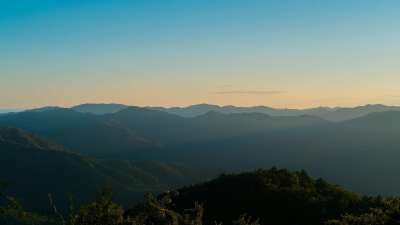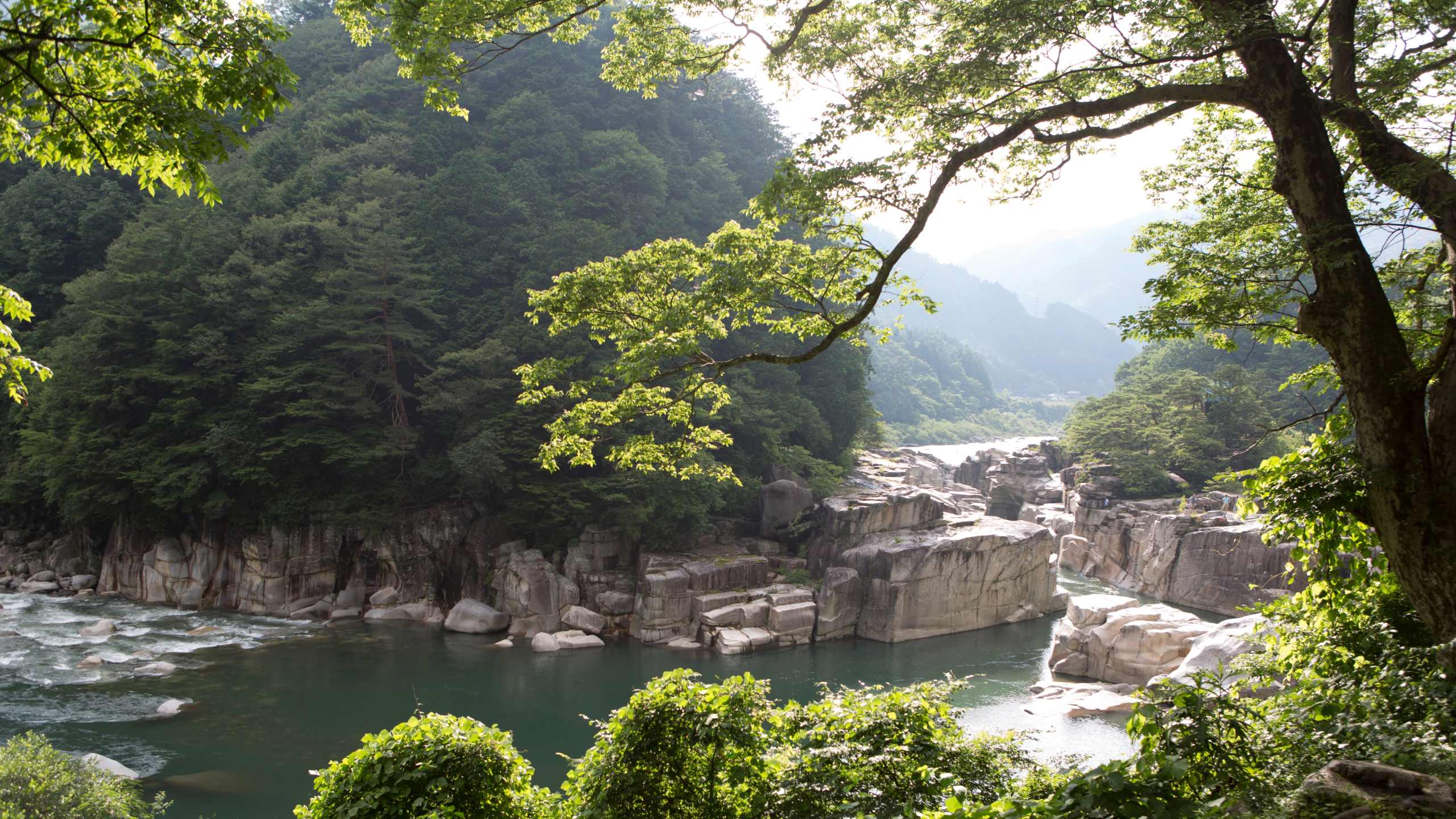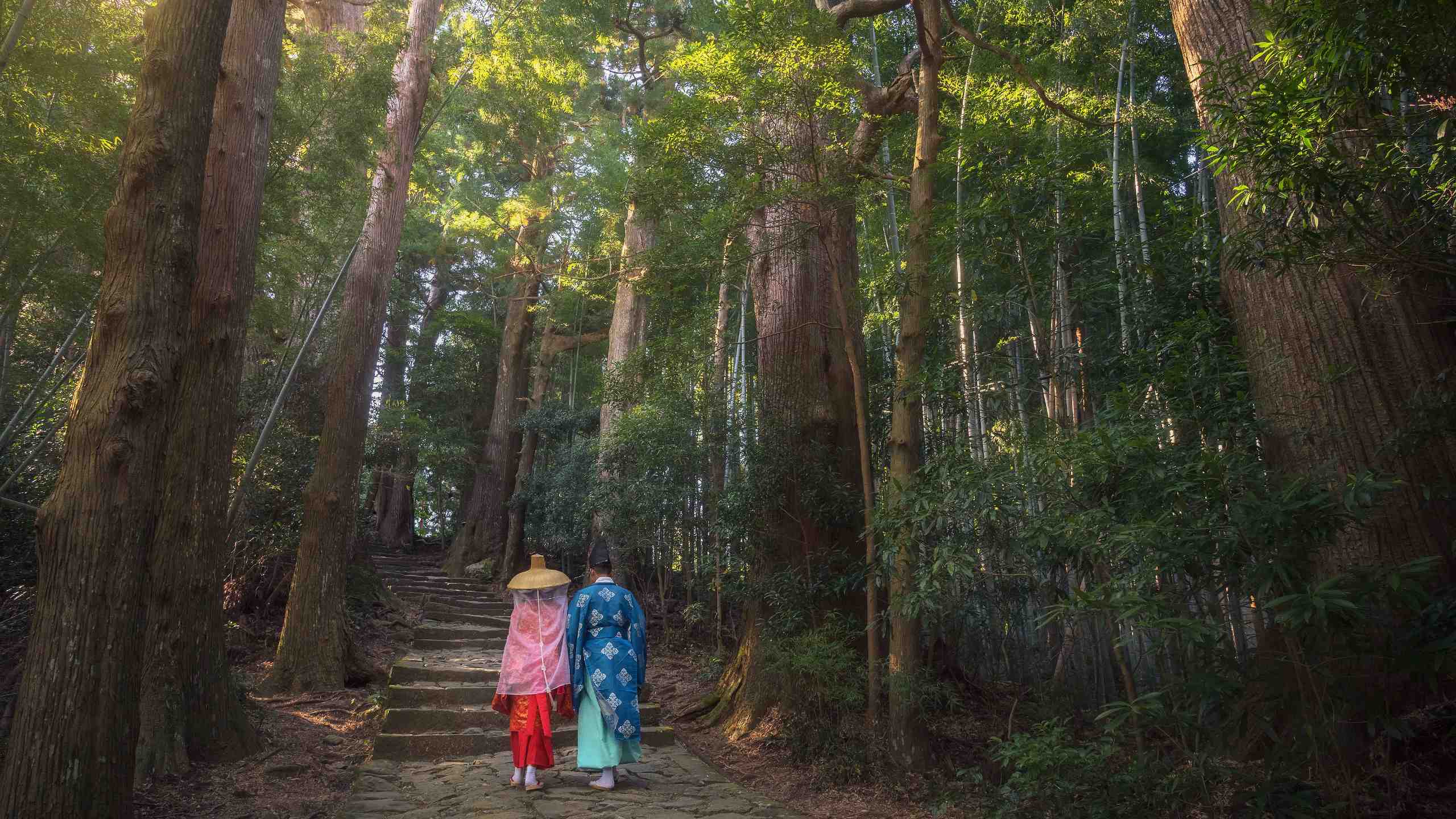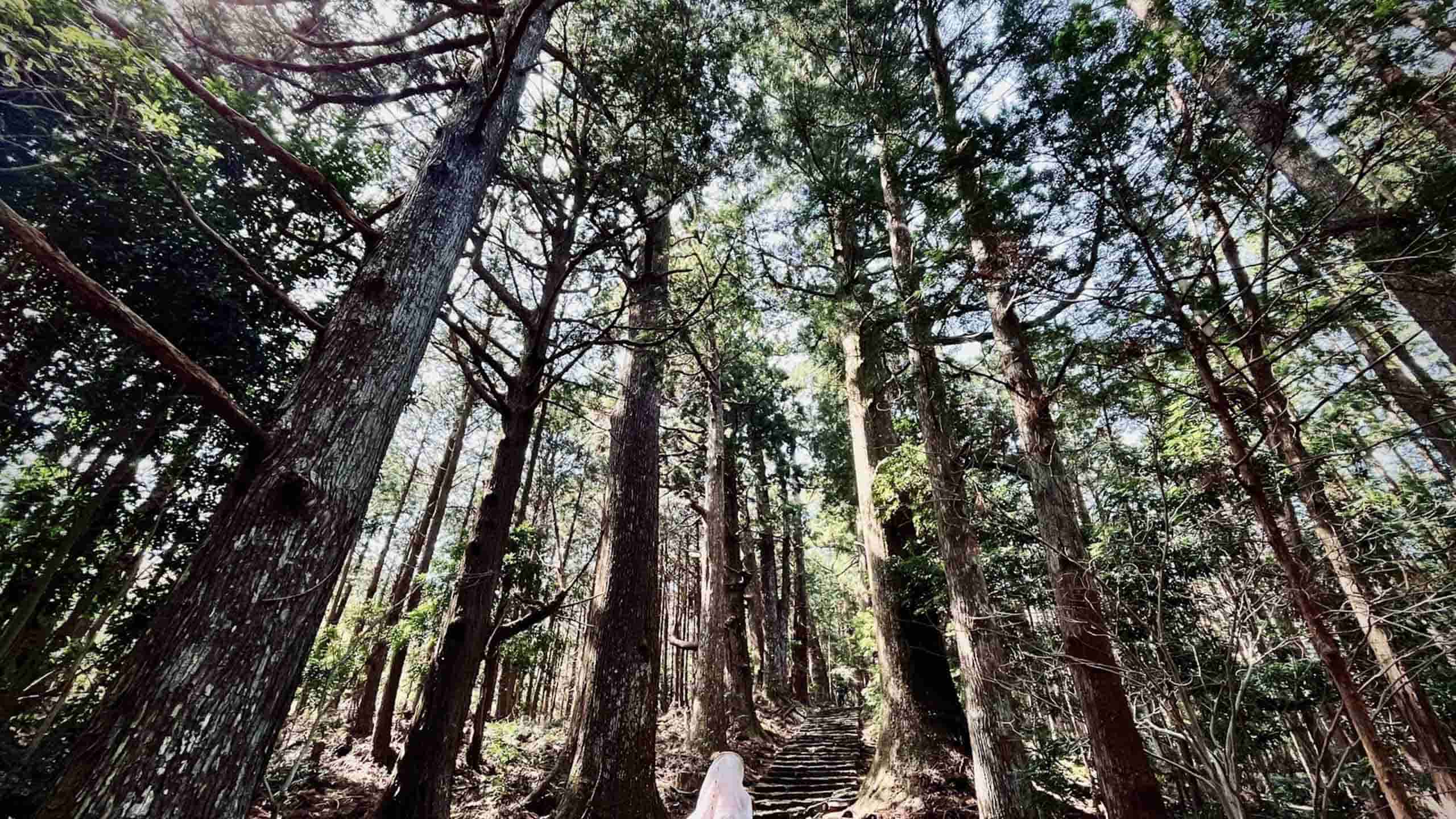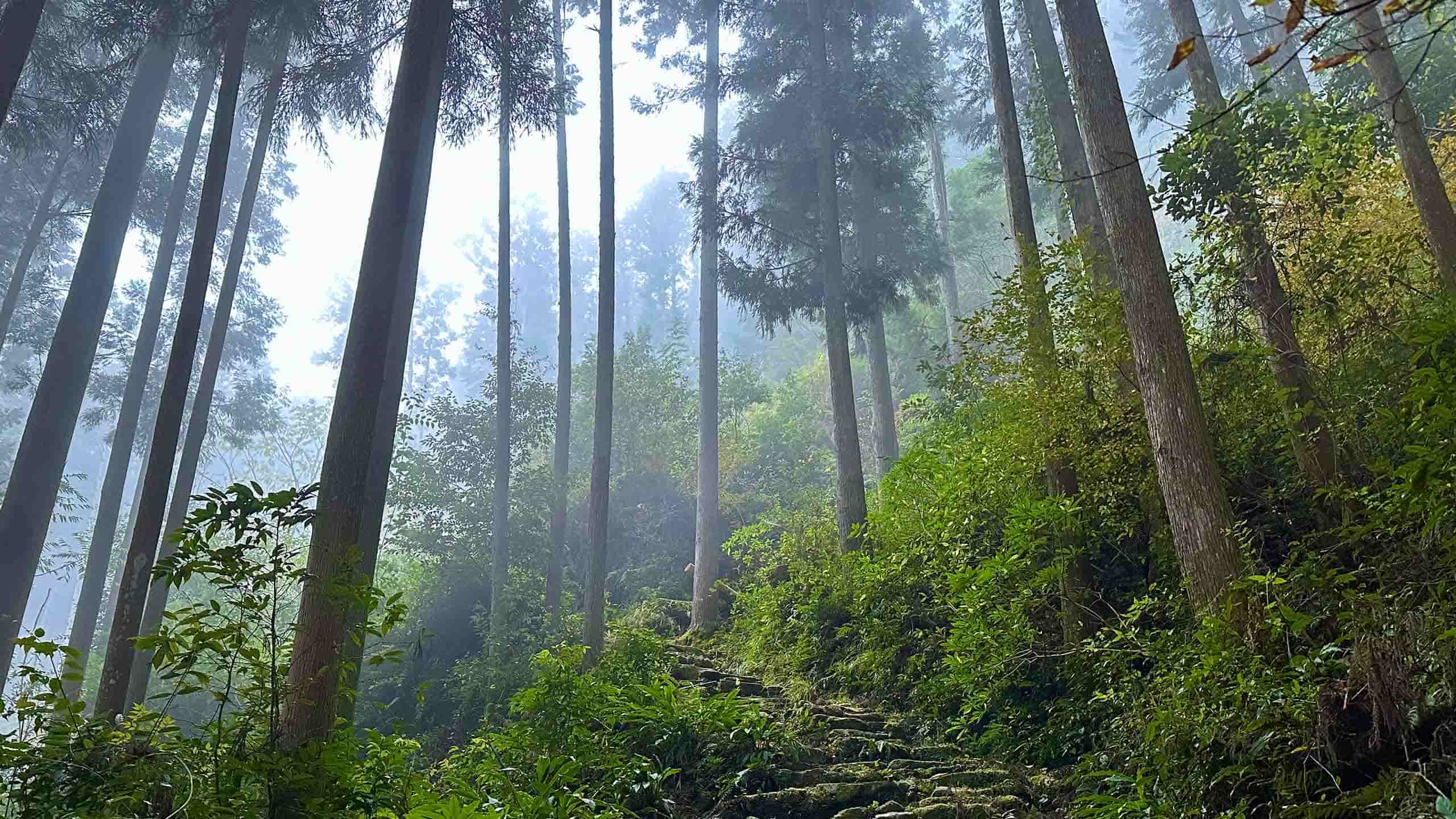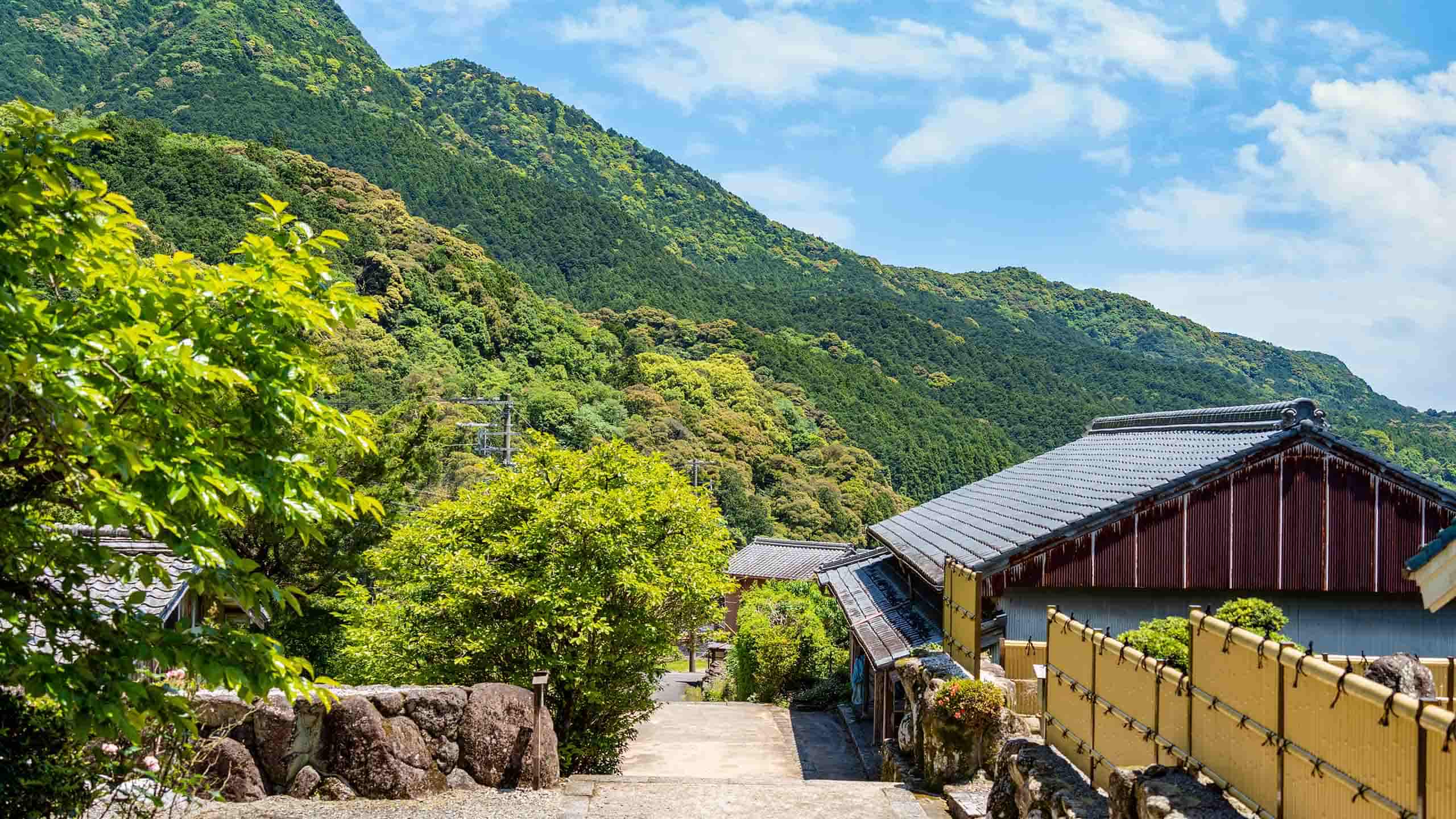The Kumano Kodo is a unique region in Japan, esteemed for its spiritual, cultural, and natural splendour. It is home to several pilgrimage routes strewn across the Kii Peninsula, Japan’s largest peninsula. Two routes – Iseji and Nakahechi- lead pilgrims on a sensational trip of spiritual discoveries as they behold the Kumano Sanzan, the three Grand Shrines of Kumano. The walk also brims with enthralling visuals of nature's bragging rights, such as waterfalls, green mountains, and lush forests, among other worthy sights on the routes. Let's compare and contrast both routes and see what makes them incredibly inviting. Explore our collection of Kumano Kodo Walking Adventures from self-guided to guided or private guided walks.
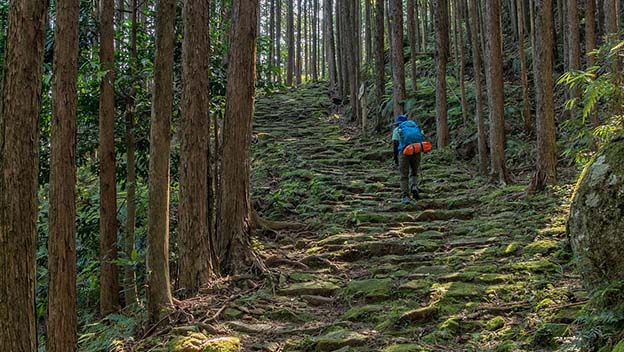
Photo credit: Kanenori
Kumano Kodo Iseji vs Nakahechi: An Overview
Both routes of the Kumano Kodo are historic portals to the divine, steeped in time and flanked by natural elegance. They are sprinkled with World Heritage Sites, enchanting waterfalls, beautiful mountain passes, onsen hot springs, ancient towns and cities lost time, and lovely views of the Pacific Ocean. They also feature Japanese Ryokan inns where pilgrims can spend the night, relax, recharge, and experience authentic Japanese living conditions without losing touch with the trails, as some of these lodges are close to shrines. Overall, both trails are on the frontline of the Kumano Kodo, are safe, and offer some of the region's most beautiful and otherworldly sights.
Highlights of Kumano Kodo Iseji Route
The Iseji route is one of the most popular routes of the Kumano Kodo for pilgrims seeking spiritual enlightenment and intimacy with nature. Here are some of its highlights.
The Ise Grand Shrine (Ise Shingu)
The first spiritual discovery and prominent attraction on the Iseji Route is the Ise Shrine, also known as the “Soul of Japan.” This shrine is one of the most sacred in Japan, a tribute to the goddess Amaterasu, who controls the sun. There is an inner shrine within the Ise Shrine called Naiku, which is believed to be her dwelling place and houses a sacred mirror. The shrine is also home to the Kagura Festival, featuring dance and music performances dedicated to the goddess Amaterasu and for the entertainment of pilgrims.
Kumano Nachi Taisha and Nachi-no-Taki Falls
For some pilgrims, the Nachi Taisha Shrine complex is the most important religious highlight of the Iseji Route. This shrine is one of the three Grand Kumano Shrines, known as Kumano Sanzan. Unlike other shrines, this one is particularly fascinating for its religious roots dipped in nature worship, courtesy of the Nachi-no-Taki Falls overlooking it from a distance. The waterfall is the supreme deity of the shrine, and the shrine sits halfway between the flight of stairs leading to the top of the mountain, where the falls drop from a height of 133 metres (436 feet), making it the tallest in Japan.
Magose-Toge Pass
The Magose-Toge Pass is one of the most famed routes of the Kumano Kodo Iseji trail and a part of the World Heritage Site known as “Sacred Sites and Pilgrimage Routes on the Kii Mountain Ranges.” Shaded by a canopy of lush trees and adorned with cobblestones, this mountain pass unveils the magical views of the Kii Mountain Range with its magnificent peaks and low-lying valleys. There’s also a guardian statue along the pass where people normally pray to seek blessings along the route, but it is now a place to pray if your child cries at night.
Highlights of Kumano Kodo Nakahechi Route
The Kumano Kodo Nakahechi route traverses the authentic Japanese countryside, lined with sacred shrines and jaw-dropping natural landmarks. Here are some highlights of the route.
Takijiri-Oji
Takijiri-Oji marks the starting point for pilgrims walking the Kumano Kodo through Nakahechi. It is one of the first highlight shrines on the route and a sanctuary where pilgrims performed their sanctification rituals before embarking on the trail. This shrine is spectacular for its picturesque surroundings. It nestles between the Tonda River and the Kii Mountains, giving pilgrims a foretaste of the visual natural treats that lie ahead and on the entire route. The area also has an overlook to savour the charming scenery at a glance before proceeding.
Hongu Taisha
Among the Kumano Sanzan (Three Grand Shrines), Hongu Taisha is remarkable as the head shrine of over 3,000 other Kumano shrines. Pilgrims on the Nakahechi route enjoy accessing this hallowed shrine lodged in the Kii Mountains via its torii gate, which stands at 33 metres (108 feet) and is the biggest in the world. The main shrine building in Hongu Taisha is also noteworthy for its string of cedar trees lined along the pathway that leads to its terrace, making it a beauty for the eyes.
Yunomine Onsen
Onsen hot springs are treasured natural jewels in Japan’s spiritual landscape, and on this route, pilgrims can find one of them – the Yunomine Onsen, dating back 2,000 years ago. It is said that the onsen changes its colours up to seven times daily, making it all the more spectacular. Most importantly, it serves the purpose of a spiritual cleansing ritual that involves pilgrims washing themselves in the spring waters before visiting the sacred Hongu Taisha Shrine.
Differences and Similarities Between the Iseji and Nakahechi Routes
Similarities
- The Kumano Kodo Iseji and Nakahechi Routes are different but share a few things in common.
- First, they are pilgrim routes that lead to the Kumano Sanzan—the three grand Shrines of Kumano.
- Both routes also usher pilgrims into an area of spiritual discoveries and enlightenment as they pay homage to these shrines.
- Both routes offer abundant natural views of whistling streams, waterfalls, the Pacific Ocean, mountains, rivers, forests, valleys, and jaw-dropping geological formations.
- Pilgrims will enjoy varying cuisines along both routes, rest in Ryokan inns, and interact with locals in the small towns and villages.
Differences
- Both routes begin from different towns and offer different starting-point experiences. While the Iseji begins from the Ise Shrine, Nakahechi begins from the Tsugizakura-oji shrine with different ambiances and moods.
- Nakahechi brings pilgrims before the grand Hongu Taisha Shrine and its torii gate, the largest in the world, while the Iseji route leads pilgrims to the Naichi Taisha Shrine with its waterfall allure.
- The Iseji route features more mountain passes than the Nakahechi, offering more thrills and scenic views to the experience.
- On the Nakahechi route, pilgrims can enjoy a traditional onsen hot spring bath while soaking in the Yunomine Onsen, but this is absent along the Iseji route.
Kumano Kodo Iseji vs Nakahechi Routes – The Verdict
Both routes are spectacular in unique ways and offer the same spiritual immersion theme that the Kumano Kodo is known for. They also provide more insight and revelations into the countryside life and beauty of Japan's Kumano Kodo region. These features are paramount on the route, and most pilgrims usually focus on them. Except for a few differences, like the onsen bath, different starting points, and shrines, both trails are magnificent and unique, and you might not miss anything remarkable if you choose one over the other.
